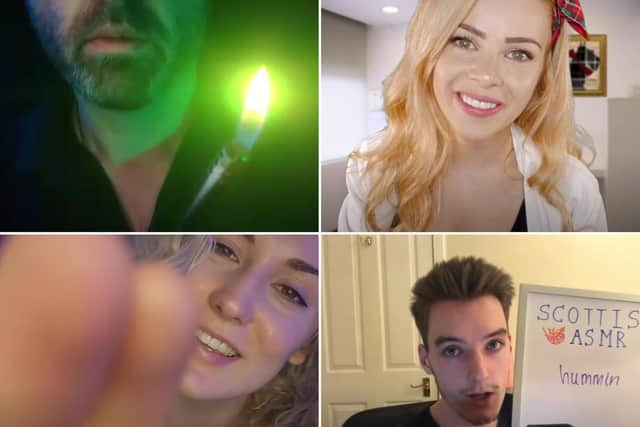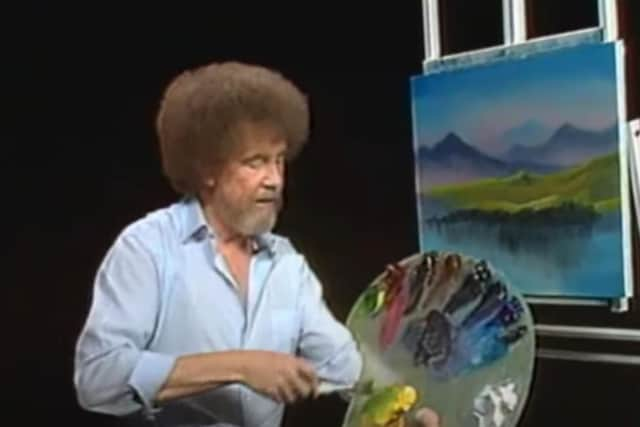Inside the weird and wonderful world of Scottish ASMR
It’s a phenomenon which has been growing quietly for years now, and it still doesn’t feel socially acceptable to talk about.
But it is gradually breaking into the public consciousness. Celebrities now take part in these kind of videos, which are consumed by millions online.
Advertisement
Hide AdAdvertisement
Hide AdAnd Scotland has its own hub of creators making content to help people fall asleep all over the planet.
Welcome to the world of ASMR.
In everyday life, Duncan is a student who lives in Edinburgh. But online he is Dido ASMR, a YouTuber with a channel filled with magic tricks, gaming, and rambles...all ASMR-style.
“ASMR not only helps me to relax but it also provides an opportunity for me to escape from the stress and reality life can bring,” he says.
Finding sleep again
The 20-year-old remembers lying awake as a teenager desperately trying to get to sleep, and stumbling on ASMR videos.
Duncan said: “Since then, I have been falling asleep (almost) every night to relaxing sounds, voices and people that I can't thank enough!”
You can read these kind of stories under almost every ASMR video - of people who suffer with insomnia or crippling anxiety, who are finally able to get a good night’s kip.
They are soothed to sleep with videos of ocean waves, bedtime stories, language lessons, even tales of Greek mythology.


ASMR was only named as recently as 2010. It stands for Autonomous Sensory Meridian Response.
Advertisement
Hide AdAdvertisement
Hide AdA study in 2018 found the relaxing ‘brain tingles’ may have benefits for both mental and physical health.
Since the first video was uploaded, the community has grown rapidly, and the appetite for this content is insatiable.
We are, after all, living in times where people need a way to relax.


The Covid-19 pandemic has benefited Duncan’s channel, he says, with views piling up over lockdown. He also has more time to create videos.
Could it be that, amid harrowing current events, people are escaping into this world of whispers, crinkles, and, eventually, sleep?
"I think a lot more people have turned to finding ways to distract themselves from the current global situation and perhaps stumbled upon ASMR while trying to de-stress,” Duncan says.
Live streaming has also helped him reach a wider audience and he says it encourages people to stay indoors.
The Scottish ASMR community is relatively small and close-knit. Its biggest creator is Scottish Murmurs, who has to date accumulated more than 78 million views.
Advertisement
Hide AdAdvertisement
Hide AdThe amount of money an ASMR YouTuber makes will vary from one artist to the next. It's been reported the ‘Queen of ASMR’ GentleWhispering makes up to $130,000 a year, while most others make far less.


Squashing negative stereotypes
To people like Duncan, ASMR is a “feeling of pure relaxation and calmness” which is too often misunderstood.
“A lot of people tend to stereotype ASMR as something sexual which is definitely not the case,” he says.
“It may not be for everyone, and you may not experience it, but those who do enjoy ASMR will agree it has helped them. I am so glad to see it becoming the ‘norm’ and less people being embarrassed by it.”
The phenomenon has often been unfairly categorised as something weird and sexual. But the majority of its content creators would disagree.
“ASMR is not some crazy lady eating a pickle,” says Scottish Undertones ASMR, “Though there is that.
"It is also not sexual (although there IS a sexual version of everything).”
‘It’s a tonic’
The YouTuber, who did not wish to give his real name, has more than a million views of his videos. They range from cranial nerve exams (a very popular genre) to kilt ASMR, and even an interrogation with the Scottish police.
Advertisement
Hide AdAdvertisement
Hide AdA performer by trade, he was able to use his skills with camera work, directing, and acting to create his content, which has enabled him to stay at home and look after the kids.
So what is it all about? “It’s a tonic, a distraction,” he says.
"ASMR is about using the same modern technology that stresses us out to also cure us for a little while of all the stresses and anxiety so many of us feel.”
Take a look in the comments, many people have spoken of experiencing a ‘tingling’ sensation in the head and neck which is triggered by ASMR. This helps induce relaxation and sleep.
It can be brought on by any number of what is called ‘triggers’, which differ from person to person. Whether it is whispering, or soft voices, tapping, or other gentle noises.
Personal attention is another key aspect of ASMR, which can be experienced in roleplays like a doctor’s visit or glasses fitting.
How does Scottish Undertones describe it to someone who’d never experienced it?
He says: “The first thing I say is ‘have you seen Bob Ross, The Joy of Painting?’
Advertisement
Hide AdAdvertisement
Hide Ad“Hopefully, if that person has seen it they immediately understand the relaxing vibe, the calming voice and the peaceful nature of his work. We often consider him the accidental Grandad of ASMR.”
‘Accidental ASMR’ is also a thing. There are whole channels dedicated to scenes in movies or television shows that are relaxing and strangely satisfying. The makeup scene in Edward Scissorhands, for instance. Or Woody being fixed with the utmost care and attention in Toy Story 2.
“If you are willing to overlook the initial strangeness, ASMR is beneficial because it forces us to slow down,” says Scottish Undertones.
"Most of use operate at a fast pace these days. People can find a bit of peace and tranquillity in the slow, meditative pace of an ASMR video.”
A message from the Editor:Thank you for reading this article. We're more reliant on your support than ever as the shift in consumer habits brought about by Coronavirus impacts our advertisers.
If you haven't already, please consider supporting our trusted, fact-checked journalism by taking out a digital subscription.